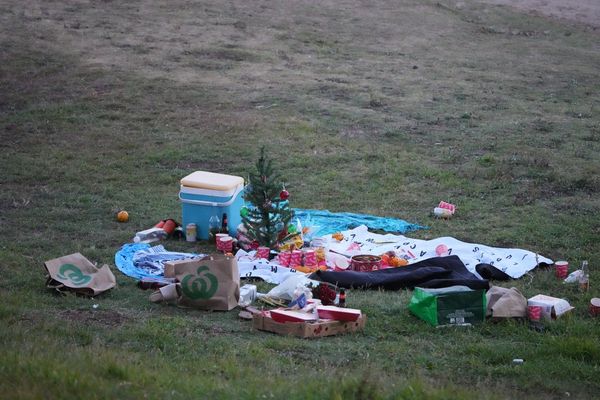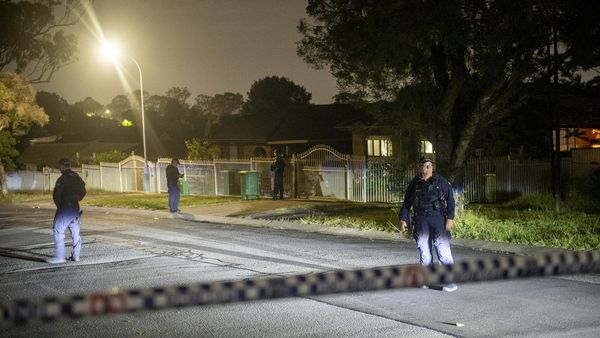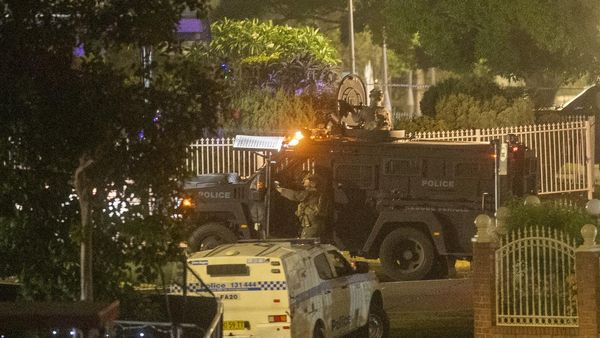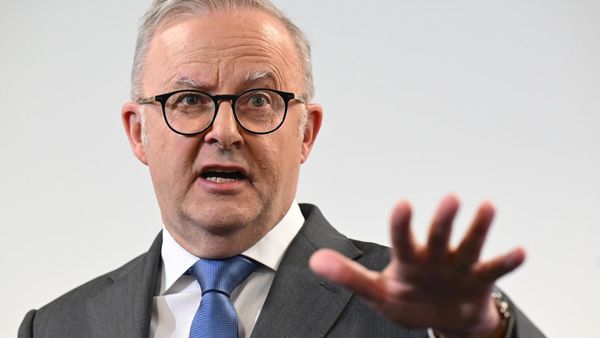
Photograph: Dr Jodi Rowley
A range of amphibious grunts, clicks, squeals and screams from more than 60 species of Australian frogs has landed at No. 3 of the Aria album charts – with hopes of knocking off Paul Kelly and Taylor Swift to take the top spot.
Brought together by the Bowerbird Collective (musicians Anthony Albrecht and Simone Slattery) under the banner Songs of Disappearance, the project is raising funds for the Australian Museum’s FrogID project, with the aim of bringing attention to the plight of Australian frogs.
Recorded by experts and citizen scientists, it reprises last year’s project – an album led by a symphony of Australian bird calls – which peaked at No 2.
While Australia holds the dubious honour of being host to the worst mammal extinction rate of any country on Earth, our frogs are also in dire straights due to habitat loss, climate change and chytrid fungus disease.
Jodi Rowley, FrogID lead scientist and curator of amphibians and reptiles at the Australian Museum and UNSW, confirmed Australia has already lost four frogs: the southern day frog, sharp-snouted day frog, and both southern and northern gastric brooding frogs.
About 40 more species are threatened – some of which have not been found for years and are likely to be extinct. “As a group globally, amphibians are more threatened and declining faster than any other vertebrate group,” she said.
Rowley said the Songs of Disappearance project, along with the FrogID app – through which users record frog calls, to identify the species – and November’s FrogID week, were important tools for helping to engage people with the wonders of the amphibian world.
Unlike birds, frogs are secretive, usually nocturnal, and hard to find, even in places where they remain abundant. “This is one way of hopefully giving people a bit of a connection to frogs,” she said.
Rowley recounts a story of walking with her father near Manly Dam on Sydney’s northern beaches. As rain fell, red-crowned toadlets, a tiny species found only in the Sydney basin, were calling all around them.
“I actually peeled apart some leaves and showed my dad this frog, and he actually started crying, because he just didn’t realise that this precious threatened animal was the thing making that noise,” she said.
“He still remembers it vividly. It’s about making that connection. It’s really easy to be in your own world and not realise that there’s all these things around us that need our help, that are just hanging on.”
Retired journalist and naturalist Greg Roberts was a student living in Brisbane in 1973 when he and his housemates became the first witnesses to the extraordinary breeding biology of the southern gastric brooding frog, discovered less than a year before.
“We had two or three in a fish tank in the lounge room of this house, and one evening we watched goggle-eyed as this female frog, who was leaning up against the side of the tank, started ejecting all these baby frogs from her mouth,” he recalls.
“They were just like miniatures of her, swimming around the tank. We were mesmerised, and intrigued, because we had no idea what was going on. Clearly the tadpole stage had been bypassed, but we didn’t know how. We were stunned mullets.”
Both gastric brooding frogs, which lived in south-east Queensland’s Conondale and Blackall Ranges and near Eungella in central Queensland, have been extinct since the early 80s. Yet their calls were recorded, and appear on Songs of Disappearance.
Rowley described hearing the song of these extinct species as haunting and powerful. “We should be deafened by the sound of frogs every summer – when we’re greeted by silence, which we tend to be a lot lately, that’s not a healthy environment.”
Even the last three years of floods had not necessarily helped frog populations recover after years of drought, she warned. “There’s a lot of frogs that can’t handle raging white-water rapids in the place that they normally hang out and breed.”
Extreme wet weather also enables the spread of amphibian chytrid fungus, which has devastated frog populations worldwide. Last year, there was a catastrophic frog mass mortality event, which Rowley dubbed a “frogpocalypse”.
Bowerbird Collective’s Anthony Albrecht says the southern gastric brooding frog is the “underfrog” of the album, describing their call as “a deep, mournful, quintessential croak … It’s such a different sound world to the bird album, but equally beautiful”.
“This is a huge moment for biodiversity in Australia. We had an announcement yesterday from the federal environment minister about reform of environmental law; we have discussions happening right now in Montreal at COP15.
“I think this is an opportunity for Australians to show their support for Australian wildlife to send this album hopping up the charts.”







